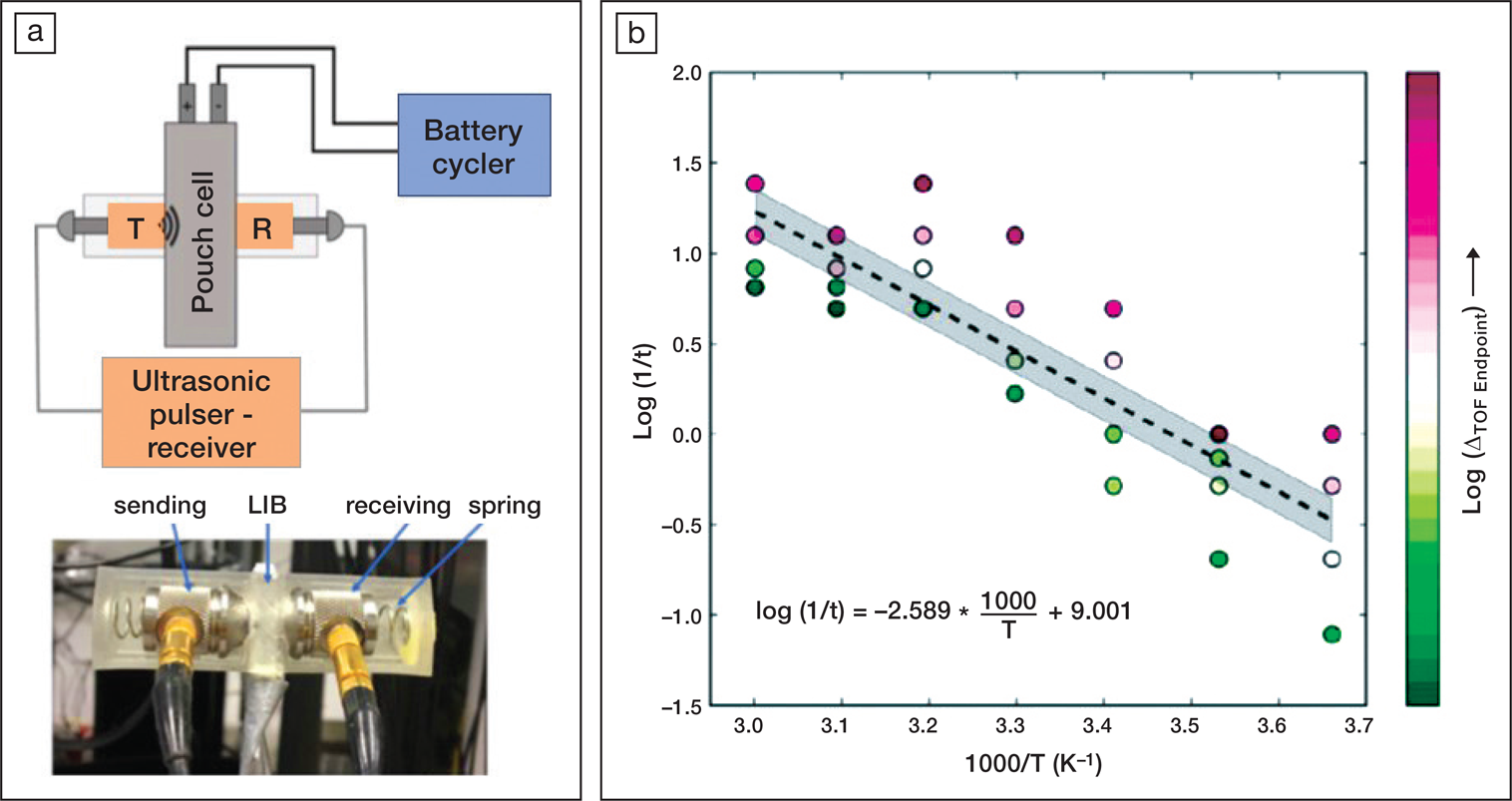Lithium-ion batteries near-universally serve as power sources in portable electronics, and an increasing number of electric automobiles and trucks are appearing on roadways. All of these applications have a common element: the batteries that power them wear down with time and use. As lithium-ion cells repeatedly cycle, they generate several side reactions that preclude the electrodes from maintaining maximum storage capacity. Among the most damaging degradation processes is the proclivity for lithium ions, found in the cathode and electrolyte of the cell, to deposit on the surfaces of the graphite anodes in the form of bulk metal. This plating reaction blocks electrolyte ion mobilities and inhibits intercalation of lithium ions into the electrode during charging. Extreme temperatures and excessive rapid cycling rates exacerbate this energy-density fade. Moreover, needle-like growth of lithium-metal plates in the morphology of dendrites poses additional risks of short-circuiting cells. It is critical to have characterization techniques that can accurately detect and quantify this phenomenon in a timely manner. Most previous approaches typically relied on postmortem analyses of disassembled cells. What is needed is real-time (in operando) assessment of battery health.
In order to develop a nondestructive and more precise diagnostic method, Daniel Steingart of Columbia University and his colleagues at Columbia and Princeton Universities took advantage of the fact that density variations in solids alter the speed of sound as it travels through them. The researchers pinged cycled commercial lithium-ion pouch cells with ultrasonic signals and analyzed the wave forms of the received signals. Intercalation of lithium into the graphite or plating on its surface changes the densities and modulus of the cell and thus alters the length of time it takes for the incident sound wave to return back to the analyzer. This is known as “time of flight.” The researchers identified the cycling and temperature conditions that induced lithium plating and corresponding time-of-flight measurements. They published their findings in a recent issue of Cell Reports Physical Science (doi:10.1016/j.xcrp.2020.100035).
Steingart says, “We think acoustics provide an important complement to existing characterization and diagnostic tools for batteries. The methods and analyses we show in the paper are analogous to electrochemical impedance spectroscopy (EIS). Where EIS can be directly correlated to dynamics and provide inferences to structure, acoustic data are directly related to structure and provides inferences into dynamics.”
The researchers connected acoustic transducers across rectangular pouch cells and measured the changes in the wave period to derive times of flight. Their measurements specifically identified differences in acoustic shifts between those measured for slow charge cycles (that did not deposit lithium metal on electrodes) and faster, plating-inducing charging. The efforts carefully deconvoluted time-of-flight-induced changes due to plating from other battery degradation processing, such as gas evolution and swelling of pouch cells. Research team members coupled the acoustic measurements with electrochemical measurements and used postmortem analysis of cycled cells with microscopy and crystallographic analysis to confirm the plating behavior. Of note, the researchers derived an Arrhenius (logarithmic–logarithmic) relationship between the rate of bulk lithium plating, cell charging current, and the temperature of the battery.
US Naval Research Laboratory researchers, who are unaffiliated with this effort, assessed its significance. Corey Love says, “Improving lithium battery safety requires multiple diagnostic inputs to provide a comprehensive understanding of battery state of health and stability. Ultimately, a collection of electrochemical diagnostics coupled with innovative methods like Steingart's are needed to identify potentially harmful events, like lithium plating, but also the interplay between electrochemical processes and mechanical and thermal effects.” Rachel Carter adds, “From a diagnostics perspective, it is exciting that the acoustic strategy is sensitive to lithium deposit morphology and quantity, enabling risk assessment, which is difficult to achieve with the EIS analysis.”
Unlike other characterization tools, acoustic sensing is noninvasive, diagnoses specific segments of battery cells, and aptly discerns between different degradation mechanisms. This approach will provide valuable fundamental insight into optimal temperature and charge/discharge regimes for novel battery designs, according to the research team. Most importantly, the required diagnostic equipment is relatively compact and simple. This allows many cells to be tested in the laboratory at once, and eventually electric transportation vehicles and grid-scale battery banks will stand to benefit from built-in sensors that will provide real-time tracking of battery health and warn about impending degradation or safety concerns.

(a) The researchers developed an acoustic sensing setup that determined changes in time-of-flight to derive degree of lithium plating on graphite anodes after cycling. LIB is Li-ion battery. (b) These measurements delivered an Arrhenius relationship between cycling temperature, charge rate, and plating-induced electrode health decay. Logarithmic color bar represents measured time-of-flight differences detected by acoustic sensing. Credit: Daniel Steingart.



